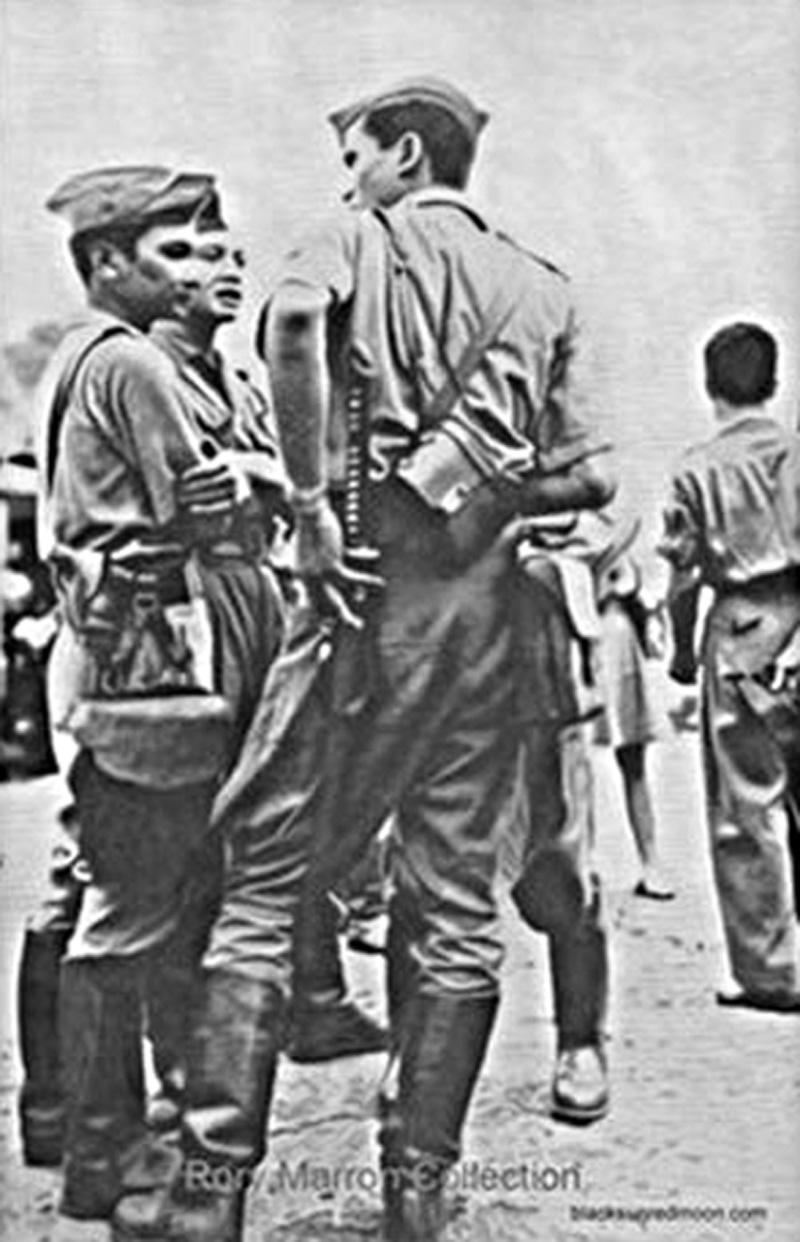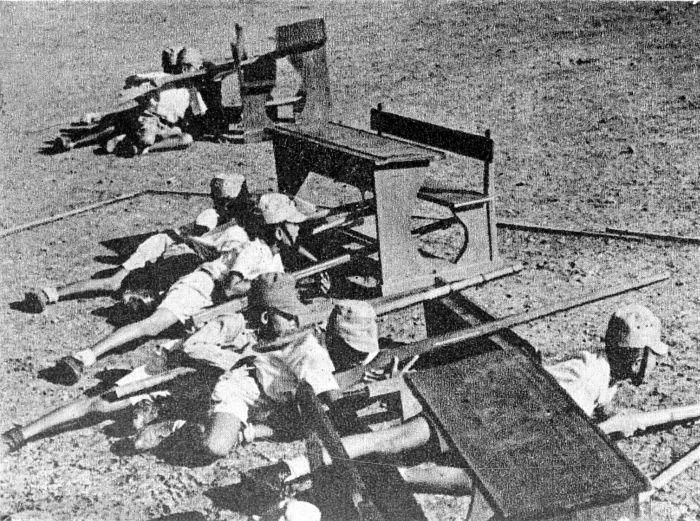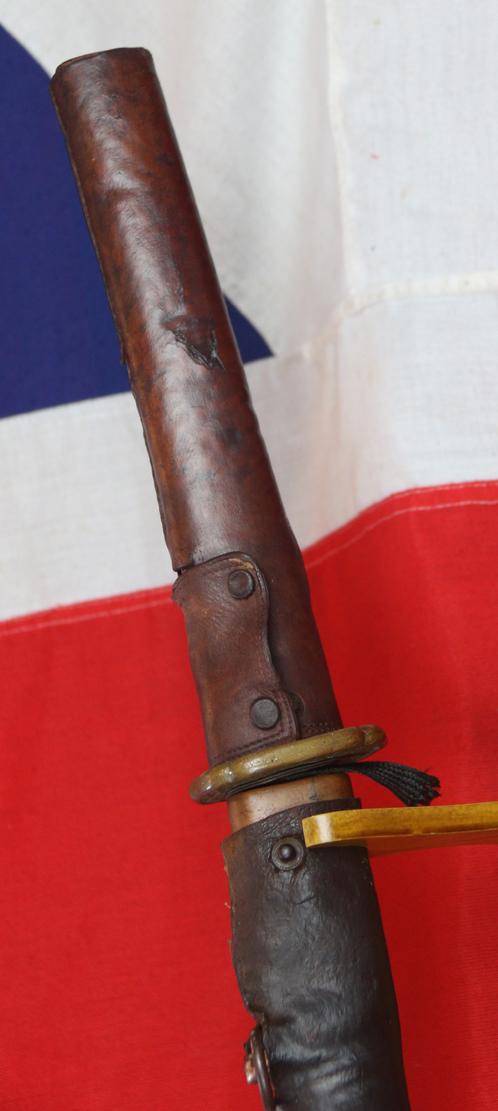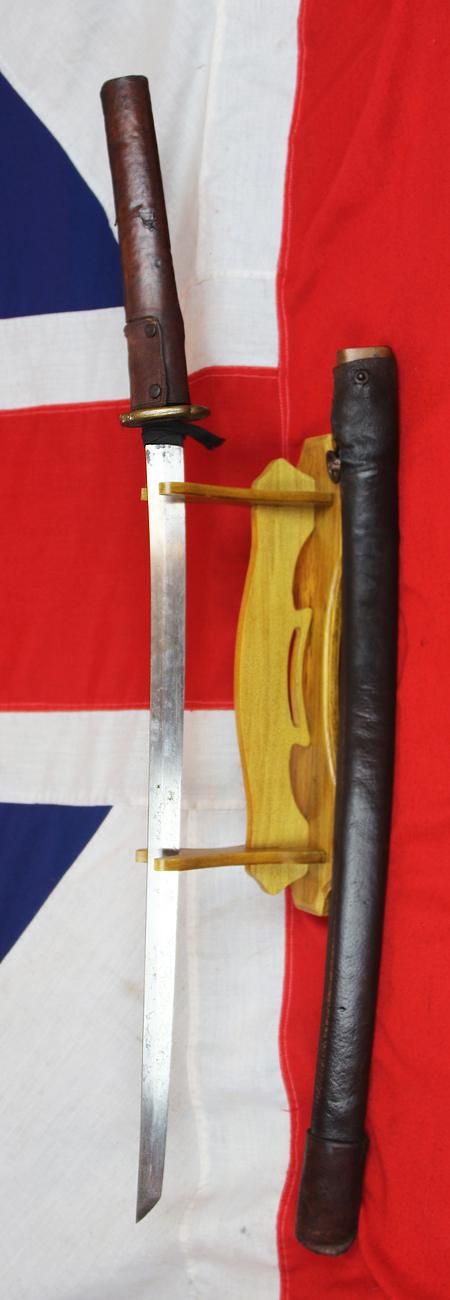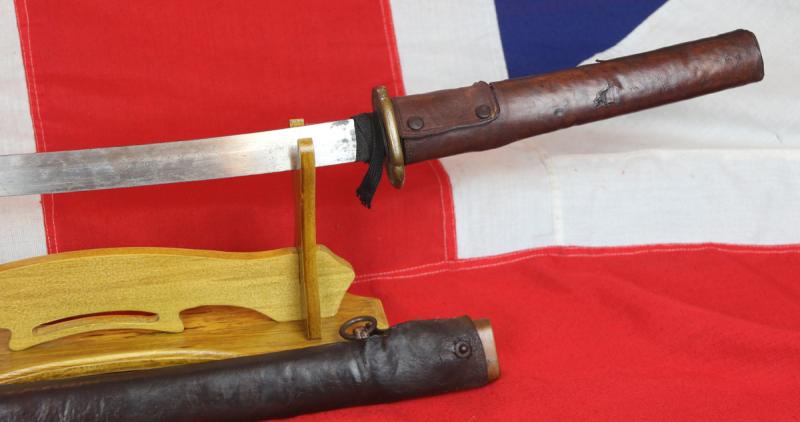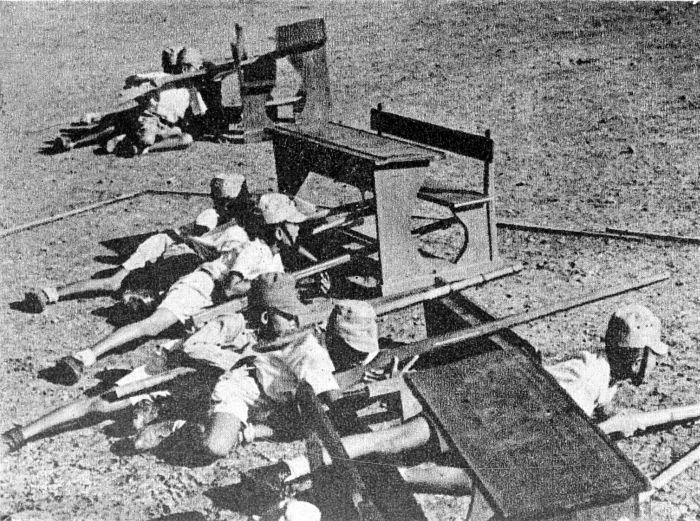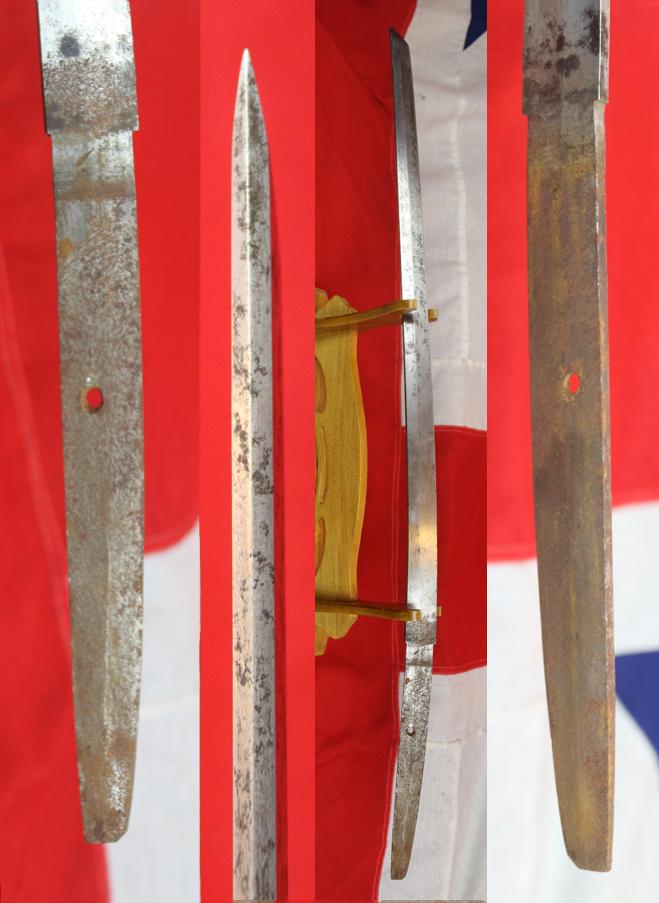A WW2 Japanese Officer's 'Shin Gunto' Occupation Sword, Made During The Imperial Japanese Army's Occupation of Java in Circa 1943/44
Untouched since its return from WW2 from a naval family. Combat leather covered mounts, over plain wood shirasaya, with a locally Javan cast Japanese cherry blossom decorated military tsuba. Very, very sharp grey blade. Very likely made in Sumaran Semerang, a Japanese Garrison on the island of Shiyawaka. It had an occupation steelworks that made swords for Japanese officers, who could no longer at the latter part of the war, obtain swords from Japan. They also produced swords for the Indonesian collaborating officers. The sword has been stored since around 1947. A basic officer's sword of regular quality but an especially and incredibly interesting piece from the Japanese Pacific campaign.
As it is an original WW2 issue occupation sword it is probably one of the least expensive examples of an original Japanese officer’s service swords of WW2 available on the market today, but also one of the most intriguing, to specifically come from the occupation of the Indonesian Islands by Japan in WW2
The Japanese Empire occupied Indonesia, known then as the Dutch East Indies, during World War II from March 1942 until after the end of War in 1945. The period was one of the most critical in Indonesian history. Under German occupation, the Netherlands had little ability to defend its colony against the Japanese army, and less than three months after the first attacks on Borneo the Japanese navy and army overran Dutch and allied forces. Initially, most Indonesians optimistically and even joyfully welcomed the Japanese as liberators from their Dutch colonial masters. This sentiment changed as Indonesians were expected to endure more hardship for the war effort. In 1944–45, Allied troops largely by-passed Indonesia and did not fight their way into the most populous parts such as Java and Sumatra. As such, most of Indonesia was still under Japanese occupation at the time of their surrender in August 1945. On 29 April 1945, Japanese occupation force formed BPUPKI (Indonesian Independence Effort Exploratory Committee) (Japanese: Dokuritsu Jyunbi Choosakai ), a Japanese-organized committee for granting independence to Indonesia. The commanding officer of 16 IJA was General Nagano Lt-General Nagano Yuichiro. Indonesian independence meeting and discussion were prepared through this organization. The final stages of warfare were initiated in October 1945 when, in accordance with the terms of their surrender, the Japanese tried to re-establish the authority they relinquished to Indonesians in the towns and cities. Japanese military police killed Republican pemuda in Pekalongan (Central Java) on 3 October, and Japanese troops drove Republican pemuda out of Bandung in West Java and handed the city to the British, but the fiercest fighting involving the Japanese was in Semarang. On 14 October, British forces began to occupy the city. Retreating Republican forces retaliated by killing between 130 and 300 Japanese prisoners they were holding. Five hundred Japanese and 2000 Indonesians had been killed and the Japanese had almost captured the city six days later when British forces arrived. Picture in the gallery of Indonesian boy volunteers training for the Japanese volunteer army. Major Kido, in charge of a Kido Butai (an Officer Training School with an armoury in Semarang), was recommended for a British DSO for his assistance in securing the city and for subsequent help in the relief of internee camps at Ambarawa. (In fact the Japanese mistakenly opened fire upon the arriving British forces killing several members of 3/10 GR.) The DSO for Kido was not approved (which was hardly surprising, as it was just a few weeks since the Japanese surrender, and it would have caused uproar in Britain). This recommendation is mentioned in General Christison's memoirs held in the IWM, quoted by the following scholars:
The Secret of Major Kido: The battle of Semarang, 15-19 October 1945.’ Han, Bing Siong. Journal of the Humanities and Social Sciences of Southeast Asia, Volume 152, Issue 3 (1996), pages 382–428.
‘Sleeping with the Enemy: Britain, Japanese Troops and the Netherlands East Indies, 1945–1946.’ Roadnight, A. History, Volume 87, Number 286, April 2002 , pp. 245-268(24).
‘Side-stepping Geneva: Japanese Troops under British Control, 1945-7.’
Connor, S, Journal of Contemporary History, Vol. 45 (2) April 2010: 389-405. Kido Butai (battalion) was so well regarded by the British forces that it was afforded the unique honour of departing Java carrying its small arms for disposal at sea. Kido Butai was then interned on Rempang island (south of Singapore in Dutch territorial waters) before being repatriated to Japan. Interestingly the Semarang kenpeitai (military police corps), which suffered considerable casualties carrying out British orders, were arrested and handed over to the Dutch military courts for subsequent for 'war guilt' investigations and trial. No account was taken of their assistance against Indonesian nationalists. There was considerable post war ill-feeling in Japanese ex-servicemen's circles over the actions of Kido Butai with former kenpeitai being contemptuous of 'treacherous' and 'anti-Indonesian' actions by pro-Indonesian Japanese veterans. (From interviews with former IJA personnel, including ex-Kido Butai, in Connor's PhD thesis.)
The battle for Semarang, Anglo-Dutch friction and the combined British-Japanese operation to relieve internee camps as well as the British military disaster at Surabaya in October 1945 (430 dead in three days!) are the subject of the new and controversial story Black Sun, Red Moon: A Novel of Java by Rory Marron. Mr Marron suspects many of the PETA militia officers, trained by the Japanese, would have been carrying swords such as these and carried them throughout the revolution until Indonesia gained independence from the Dutch in 1949. Much of the above history was by courtesy of Mr Rory Marron author of Black Sun, Red Moon:
The original habaki small blade collar split in service and replaced with bound cord but we can have a correct copper replacement one bespoke made for around £140.
Code: 24255

